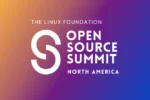It’s been a busy year for the Linux kernel. Since the last “Who Writes Linux” report, published in April 2012, there have been more than 92,000 bits of code committed to the project, from more than 3,700 developers around the world.
Along with the continued increase in developer interest, the Linux kernel itself has grown to include dozens of new features. These include full tickless operation, user namespaces, per-entity load tracking in the scheduler, user-space checkpoint/restart, and networking improvements aimed at the latency and bufferbloat problems.
The Linux kernel is also evolving to support up-and-coming technologies, whether in mobile devices, servers, or giant storage systems. For Linux users focused on storage, the F2FS flash-oriented file system was introduced, and two independent subsystems providing fast caching for block storage devices were merged into the kernel.
ARM also got a lot of attention over the past year and a half: KVM and Xen virtualization for ARM and 64-bit ARM architecture support made their way into the kernel during this period.
The report also showed that automated testing tools have gained in popularity among developers working on the kernel. From the report: “The use of automated tools to find bugs in development kernels has increased significantly during this period. Tools like the ‘Trinity’ fuzz tester and the zero-day build-and-boot system are finding large numbers of bugs in pre-release kernels, shortening the development cycle and enabling the community to deliver higher-quality releases.”
From a corporate perspective, Red Hat remained the most prolific business in the Linux kernel. The company contributed more than 9,000 patches to the kernel in the past year and a half, and in that same time, it also signed off on more than 20,000 patches from outside sources.
Signing off on contributed code used to be handled by Linus Torvalds, but today, he only signs off on 0.7% of all code. This is due to the increasing levels of delegation within the project.
Behind Red Hat, which took second place overall after “unaffiliated,” were Intel, Texas Instruments and Linaro as the top 5 contributors. Then there were SUSE, IBM, Samsung and Google, in that order.
Two companies in the list you may not be familiar with were Vision Engraving Systems and Wolfson Microelectronics, which took 11th and 13th place overall, respectively. Vision Engraving Systems makes Linux-controlled routers and engraving systems, and its position in this list is entirely thanks to an employee, H. Hartley Sweeten, who took the top slot in overall contributions to the kernel, with 2,107 contributions since April 2012. (Sweeten is working on the Comedi project, a control and measurement interface for the Linux kernel.)
Wolfson Microelectronics, on the other hand, has been building out drivers for its audio devices in the Linux kernel.
The Linux kernel has grown steadily over the past eight years. On average, it grows between 200,000 and 300,000 lines every major release. Today, the Linux kernel is just a hair under 17 million lines of code.






